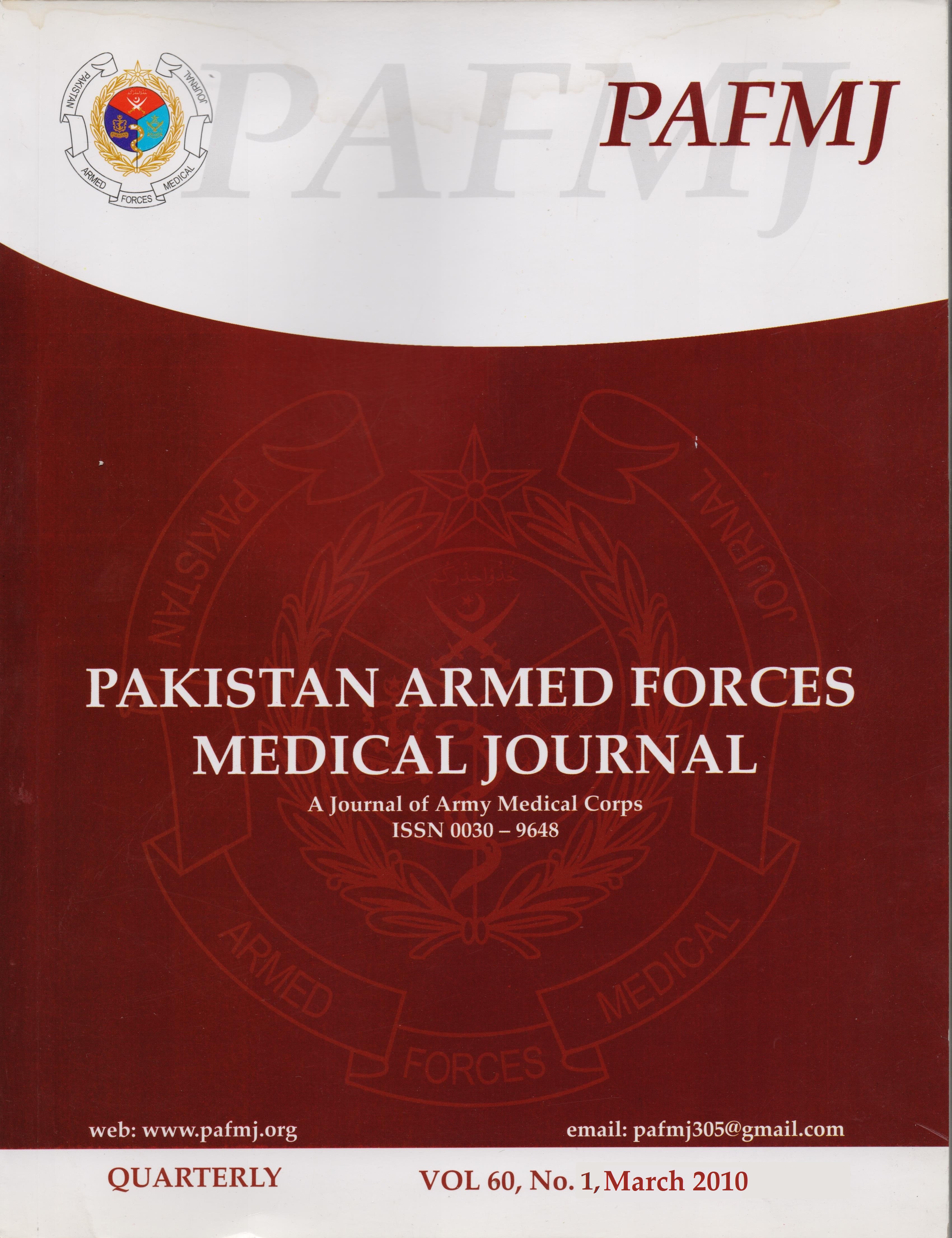ROLE OF ULTRASOUND IN ROTATOR CUFF TEARS
Ultrasound in Rotate Cuff Tears
Keywords:
Ultrasound, Magnetic Resonance Imaging, Rotator cuff, Complete thickness tear.Abstract
Objective: The study was designed to evaluate the efficacy of ultrasound in rotator cuff tears and to compare it with MRI.
Study Design: Descriptive study. Place and Duration of Study: The study was conducted in the radiology department of Combined Military Hospital Rawalpindi from July 2005 to January 2006. Patients and Methods: Total number of patients was thirty. All of these were above thirty years of age and were referred by clinicians, with shoulder pain for diagnostic workup. Post operative patients were excluded. Ultrasound and Magnetic Resonance Imaging (MRI) were performed on each patient. Same operator performed ultrasound in all patients. Results: Ultrasound (US) and Magnetic Resonance Imaging (MRI) detected equal number of full thickness tears while two partial thickness tears were missed on US. Hypoechoic defect was the most important primary sign while cortical irregularity and fluid in subacromial and subdeltroid busra were the most important secondary signs on US.
Conclusion: US was equally effective to MRI in detection of rotator cuff tears. It should be the primary investigation because of its availability, cost effective and real time evaluation provided significant expertise is developed, as it is highly operator dependent.











